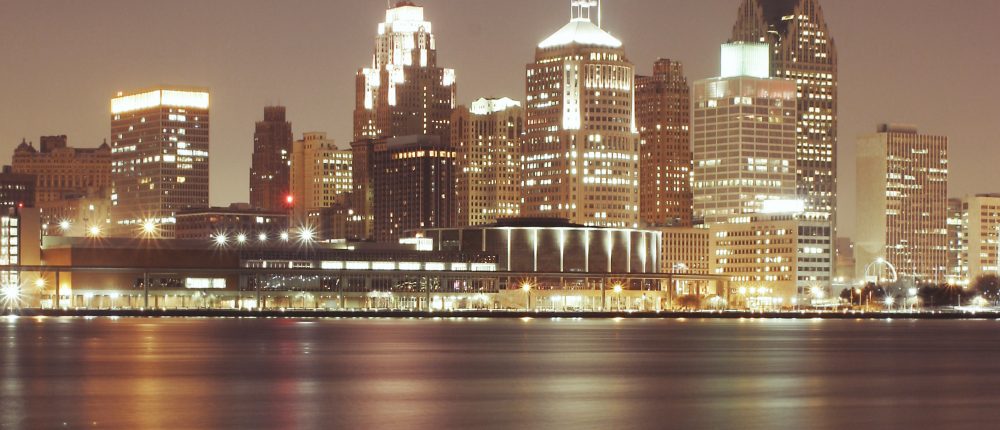Can we build cities that anticipate the future?
Contents |
[edit] Introduction
Our cities are built brick by brick, often using construction practices that evolved little in the past century and giving little regard to proper planning and sustainable development.
Yet new innovations and technologies have produced progressive means of constructing the built environment to ensure that urban infrastructure, once in place, can make a valuable contribution to the workings of a city for centuries to come, withstanding many changes in use and function. Good urban infrastructure needs to anticipate change, be built to adapt and to be resilient.
The Global Agenda Council on the Future of Cities has detailed 10 of the most important urban innovations which will shape the future of our cities. At the heart of these innovations is an understanding that the cities of the future need to be flexible and adaptive, both on a day-to-day level – doing more with less space and resources – and in the long term, be able to adapt to the powerful mega-trends placing heavy pressures on the urban environment.
The three key trends which will shape the agenda of cities for years to come are:
[edit] Demographic shifts
The UN reports that the global population will rise to 9.6 billion by 2050. Nearly all of this population growth will occur in cities – it estimated that 66% of the global population will live in urban areas by 2050. Most of these cities are located in the global south and at present, lack the capacity and resources to ensure that city growth is sustainable.
Unchecked urban population growth can lead to vast unsustainable urban sprawl, or the creation of dense slums with poor living standards. Cities will need to accommodate more people without increasing their urban footprint; increasing density, without decreasing quality of life.
This can be achieved with reprogrammable living space such as MIT’s reprogrammable apartments or by building structures with multiple uses in mind, ensuring that they can be used for different purposes at different times of the day or week, such as reusing office space or schools for social or leisure activities during the evenings or at the weekend.
In the developed world, years of declining birth rates and longer life expectancy are leading to a rapidly ageing population, with its own set of challenges. The effects of this demographic shift are already being felt in countries including Japan, Italy, Germany and Norway, with pressure being put on cities to rethink the provision of urban infrastructure, embrace universal design, and reuse and repurpose buildings and infrastructure that is becoming obsolete.
This trend is also increasing the demand for health and social services and the provision of housing that will meet the needs of people during their 100-year life. Tokyo is a city at the forefront of this trend: an estimated 200 schools per year are closing and the city is repurposing them as adult education centres, senior homes and places of leisure and exercise for the elderly. Cities in other advanced economies need to prepare for this eventuality.
[edit] Changing environment and resource scarcity
The world’s climate over the next century is likely to shift dramatically. Increased occurrences of extreme weather events, desertification and rising sea levels all directly threaten the world’s cities. Fifteen of the world’s 20 largest cities are located in coastal zones threatened by sea-level rise and storm surges.
To prepare for these challenges, cities need to be resilient, building coping mechanisms into their urban fabric. If well designed, infrastructure which protects against high impact climate events can also be flexible, serving a valuable purpose for the entirety of its life. Projects such as New York’s Dry Line, or Roskilde’s flood defence skatepark combine resilient infrastructure with a space for community leisure activities.
The urban planner Patrick Abercrombie, who created London’s post-World War Two masterplan, reserved its hinterland as a 'green belt' designed to preserve the countryside, while also providing nourishment to the city. Today, the city’s greenbelt is global, and water and resource scarcity in any region can easily disrupt the delicate balance between a city and its worldwide network of production.
The advent of urban farming will help to alleviate this risk. Urban farms are largely hydroponic – feeding water and nutrients directly to the roots – and closed loop, meaning they use up to 90% less water. They can be placed anywhere and stacked vertically making them up to 100 times more productive per hectare.
By 2050, the world’s population will demand 70% more food than is consumed today. Urban farms will help cities feed their growing populations, create a vertical green belt, and add flexibility into the food system with guaranteed yields and low risk supply chains.
Cities consume vast amounts of all resources, from the materials of which they are constructed, to the demands of their citizens for products and packaging. Cities cannot continue to follow a take/make/waste pattern, filling landfills and depleting finite resources and need to move towards a more circular economy. Systems of reuse and recycling need to be in place to smartly deal with waste and building materials which themselves need to be designed for reuse.
The European Union programme, Buildings as Material Banks, creates reusable buildings which store and record the value of their composite materials over their lifetime. Others use up-cycled materials such as shipping containers to provide low-cost flexible housing to students and young professionals.
[edit] Technology and business model disruption
Cities are economic engines. According to McKinsey, 600 cities are responsible for 60% of global GDP. The healthy economy of a city sustains its population through salaries and entrepreneurial activity. However, all economic activity is subject to disruption; shifts in business models can create new opportunities, but cites from Detroit to Liverpool have seen the possible negative effects of industrial change.
In the fourth industrial revolution, we are likely to see the biggest industrial shifts in a generation, changing the way we work and live in the urban environment. Innovations such as 3D-printing, artificial intelligence and next generation robotics will shift models of work and production in ways that are impossible to predict. Cities and businesses need to be adaptive.
Google, a company at the forefront of this change, anticipates that its business model could shift dramatically. Its new Mountain View headquarters is adapted for this, a series of giant domes under which any number of structures, fit for any purpose, can be quickly assembled, making it completely reprogrammable for any eventual use case. Cities need to take a similar approach to construction.
[edit] The sharing economy
The sharing economy can be defined as the distribution and sharing of excess goods and services between individuals, largely enabled by modern technology. This new model is having a deep impact on the urban environment. Many consumers are moving away from ownership and towards access: renting access to mobility, entertainment or space.
Companies of the sharing economy naturally add a layer of flexibility into the city. Airbnb, for example, allows people to rent out their apartments when they are out of town, easily increasing a city’s capacity to accommodate influxes of visitors as demand increases. As the sharing economy develops, similar companies will enable cities to turbo charge their efficiency, ensuring that no excess capacity is wasted.
Humanity faces the mammoth task of adding over two billion people to the urban population before 2050, the equivalent of creating a city the size of London every month for the next two decades. In order to house, feed and employ these people, cities will have to do more with less; they have to be smarter, greener and more efficient. They will have to innovate.
Written by Alice Charles, Community Lead, Infrastructure and Urban Development Industry, World Economic Forum, and James Pennington, Specialist, Knowledge Networks and Analysis, World Economic Forum.
This article was also published on the Future of Construction Knowledge Sharing Platform and the WEF Agenda Blog.
--Future of Construction 14:54, 16 Jun 2017 (BST)
[edit] Related articles on Designing Buildings Wiki
- Engineering Smart Cities.
- Fourth industrial revolution.
- Four ways smart cities will make our lives better.
- Global smart cities market.
- Measuring the success of smart cities.
- Patrick Abercrombie.
- Smart cities need to find some smarter answers.
- The innovations making our cities smarter and greener.
- White elephant.
Featured articles and news
RTPI leader to become new CIOB Chief Executive Officer
Dr Victoria Hills MRTPI, FICE to take over after Caroline Gumble’s departure.
Social and affordable housing, a long term plan for delivery
The “Delivering a Decade of Renewal for Social and Affordable Housing” strategy sets out future path.
A change to adoptive architecture
Effects of global weather warming on architectural detailing, material choice and human interaction.
The proposed publicly owned and backed subsidiary of Homes England, to facilitate new homes.
How big is the problem and what can we do to mitigate the effects?
Overheating guidance and tools for building designers
A number of cool guides to help with the heat.
The UK's Modern Industrial Strategy: A 10 year plan
Previous consultation criticism, current key elements and general support with some persisting reservations.
Building Safety Regulator reforms
New roles, new staff and a new fast track service pave the way for a single construction regulator.
Architectural Technologist CPDs and Communications
CIAT CPD… and how you can do it!
Cooling centres and cool spaces
Managing extreme heat in cities by directing the public to places for heat stress relief and water sources.
Winter gardens: A brief history and warm variations
Extending the season with glass in different forms and terms.
Restoring Great Yarmouth's Winter Gardens
Transforming one of the least sustainable constructions imaginable.
Construction Skills Mission Board launch sector drive
Newly formed government and industry collaboration set strategy for recruiting an additional 100,000 construction workers a year.
New Architects Code comes into effect in September 2025
ARB Architects Code of Conduct and Practice available with ongoing consultation regarding guidance.
Welsh Skills Body (Medr) launches ambitious plan
The new skills body brings together funding and regulation of tertiary education and research for the devolved nation.
Paul Gandy FCIOB announced as next CIOB President
Former Tilbury Douglas CEO takes helm.
UK Infrastructure: A 10 Year Strategy. In brief with reactions
With the National Infrastructure and Service Transformation Authority (NISTA).
























